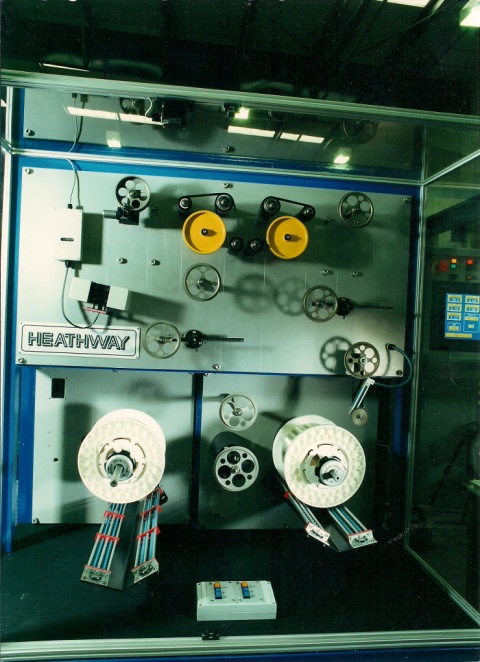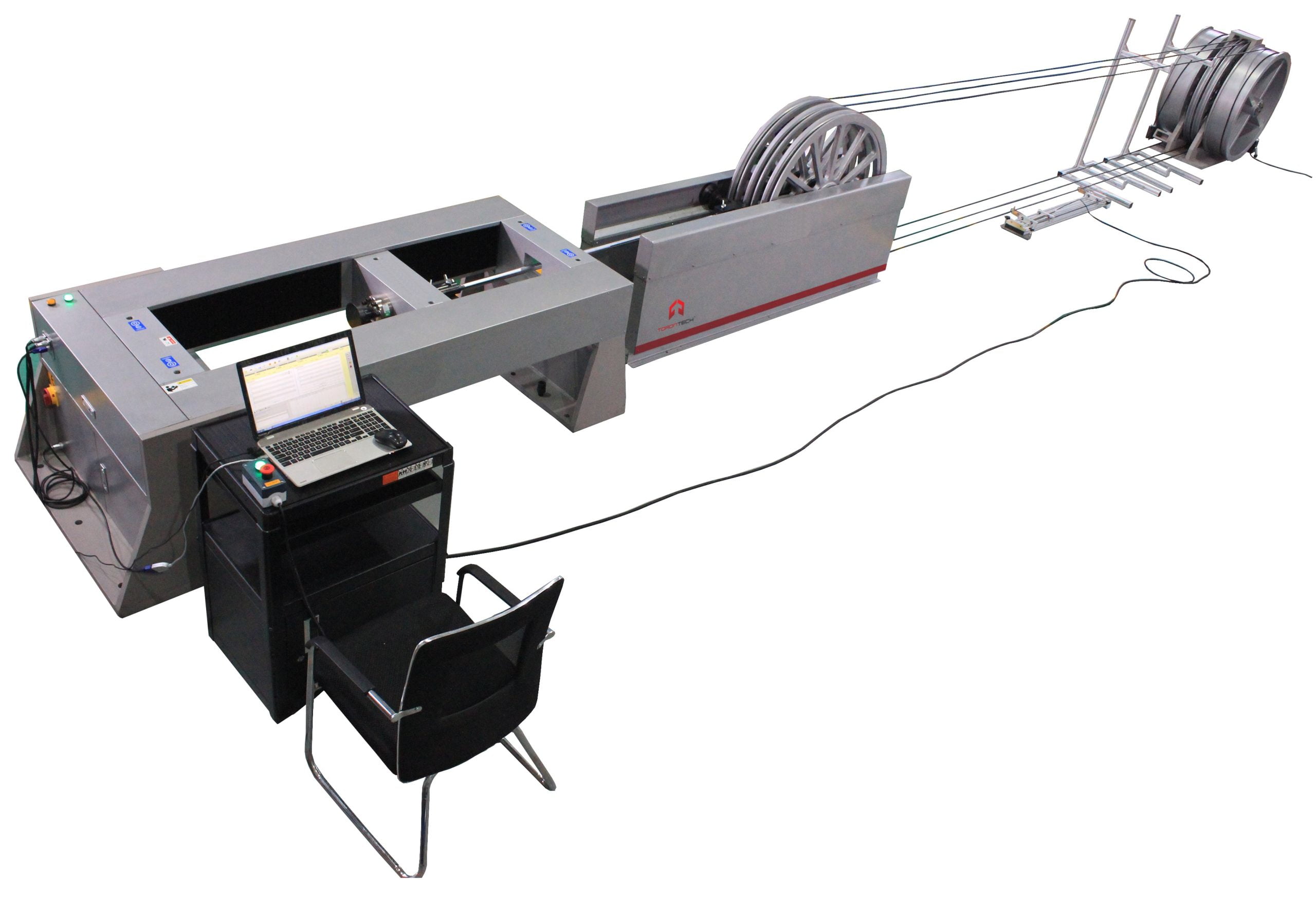Exploring the Impact of Robotic Vision on Modern Production Techniques and High Quality Control
Robotic vision innovation is changing the landscape of modern-day production and high quality control. By incorporating advanced imaging systems and expert system, makers can accomplish unmatched degrees of accuracy and effectiveness. This shift not only maximizes production processes however also addresses crucial difficulties in preserving item standards. As industries increasingly depend on these advancements, the implications for future manufacturing practices stay to be fully discovered. What will this imply for the affordable dynamics of the market?
Comprehending Robotic Vision Modern Technology
Robotic vision modern technology functions as the backbone of automation in contemporary manufacturing. It includes making use of cameras, sensing units, and artificial intelligence to enable robots to analyze and reply to visual details from their environment. This innovation permits robots to identify, situate, and review items, making them capable of performing intricate jobs such as assembly, evaluation, and product handling with accuracy. The assimilation of machine learning formulas additionally improves the ability of robotic vision systems, enabling them to adapt to varying conditions and enhance in time. By refining images and data in real-time, robotic vision systems can promote quicker decision-making and minimize errors in making processes (optical fibre diameter analyser). This technology not just boosts functional effectiveness however additionally guarantees that high quality standards are met constantly. As the production landscape remains to progress, recognizing the details of robot vision technology comes to be necessary for leveraging its potential completely
Advantages of Robotic Vision in Production
Robotic vision technology provides considerable advantages in manufacturing by boosting precision and precision in jobs such as high quality control and setting up. This increased level of information warranties that items satisfy stringent criteria, lowering waste and revamp. In addition, the assimilation of robotic vision can cause boosted production performance, allowing makers to enhance their processes and attain higher output rates.
Boosted Precision and Accuracy
In modern manufacturing, boosted precision and accuracy are crucial for enhancing production processes and ensuring product quality. Robotic vision systems enable makers to execute intricate jobs with exceptional consistency. These systems use advanced imaging technologies to spot minute details and variations in materials, components, and completed products. By analyzing aesthetic data in real-time, robot vision substantially lowers human mistake, bring about fewer flaws and better criteria. In addition, boosted precision in dimensions and placing facilitates better positioning in assembly processes, which is vital for detailed styles. Ultimately, the integration of robotic vision not only reinforces the integrity of manufacturing outcomes yet likewise cultivates self-confidence amongst consumers regarding product honesty and performance. This precision is vital in markets where quality is paramount.
Raised Production Effectiveness

Suppliers are increasingly transforming to vision systems to improve manufacturing effectiveness across numerous procedures. These advanced systems allow real-time inspection and monitoring, significantly lowering downtime brought on by mistakes or issues. By integrating robot vision, business can automate top quality control, permitting faster identification of problems and minimizing the demand for human treatment. This causes structured operations, as robots can rapidly adjust to modifications in production demands without giving up precision. Vision systems facilitate much better supply administration by properly tracking components and products, guaranteeing excellent resource usage. Ultimately, the fostering of robot vision not just improves efficiency but additionally adds to greater result prices, decreased operational prices, and improved overall performance in the production market.
Enhancing Quality Assurance Processes
Robotic vision modern technology significantly enhances top quality control processes in manufacturing by employing precision inspection methods. These sophisticated systems facilitate real-time problem detection, making sure that products fulfill rigorous top quality requirements. As an outcome, manufacturers can decrease waste and boost overall effectiveness.
Precision Assessment Techniques
Precision examination techniques have actually transformed quality assurance procedures in production, enabling the detection of minute defects that traditional techniques might forget. These techniques take advantage of advanced imaging technologies, such as high-resolution electronic cameras and laser scanning, to accomplish unequaled accuracy. By making use of robotic vision systems, suppliers can automate assessment tasks, guaranteeing consistent efficiency and minimizing human mistake. The combination of artificial intelligence algorithms in pop over to these guys addition improves these systems, enabling them to adjust and improve with time. Furthermore, accuracy inspection helps with the recognition of refined variants in product measurements and surface area coatings, which can Going Here considerably influence total product high quality. Therefore, suppliers can apply rehabilitative activities a lot more swiftly, inevitably bring about reduced waste and improved consumer complete satisfaction.
Real-Time Issue Discovery
Taking advantage of advanced imaging innovations, real-time defect discovery changes quality control procedures in manufacturing. By integrating high-resolution electronic cameras and sophisticated formulas, producers can swiftly recognize anomalies during manufacturing. This innovation assists in prompt rehabilitative activities, decreasing waste and boosting general effectiveness. Real-time systems assess products as they relocate along the production line, making certain that problems are spotted and resolved right away manufacturing schedules. On top of that, the execution of maker discovering boosts the precision of these systems, enabling them to adjust to new issue patterns in time. Makers benefit from enhanced product top quality and lowered operational costs. Inevitably, real-time issue detection not just enhances processes but likewise fosters a society of continuous enhancement in modern production settings.
Real-Time Information Evaluation and Choice Making
In the vibrant landscape of production, real-time data evaluation encourages systems to make swift, notified decisions. By leveraging innovative robot vision innovations, manufacturers can collect and refine vast quantities of data instantly. These systems evaluate visual inputs to keep track of manufacturing processes, ensuring that any variances from top quality criteria are found and attended to without delay. Consequently, producers can maximize procedures by reallocating resources and adjusting process based on real-time insights.
Additionally, the combination of information analytics permits predictive upkeep, where prospective tools failings are prepared for before they interfere with manufacturing. This aggressive method decreases downtime and improves total effectiveness. robotic vision. The capability to make data-driven choices in genuine time substantially reduces waste and improves product top quality, enabling makers to respond to market demands promptly. Therefore, real-time information analysis not only simplifies production yet additionally cultivates a society of continual improvement in contemporary manufacturing environments
Obstacles in Executing Robotic Vision Equipments
Applying robotic vision systems in making provides a series of obstacles that can impede their efficiency. One substantial obstacle is the intricacy of incorporating these systems with existing machinery and process. Producers usually deal with compatibility problems with heritage equipment, bring about boosted prices and downtime. In addition, the variability in item forms, sizes, and materials can make complex the calibration of vision systems, necessitating considerable training and fine-tuning.
Another difficulty depends on processing big quantities of visual data in actual time. High-performance computer resources are crucial, which may call for more investment in facilities. Additionally, there is a lack of experienced employees with the ability of managing and maintaining these sophisticated systems, bring about this article possible functional inadequacies. Finally, ensuring the reliability and precision of robot vision systems under differing ecological conditions presents a continuous obstacle. Attending to these concerns is essential for taking full advantage of the possible advantages of robot vision in manufacturing.
Future Trends in Robotic Vision for Production
As advancements in expert system and equipment discovering remain to evolve, the future of robotic vision in manufacturing shows up progressively appealing. Arising fads show a change towards much more advanced imaging innovations, such as 3D vision systems and hyperspectral imaging, which will certainly boost precision in quality assurance procedures. Combination with the Net of Things (IoT) will make it possible for real-time information evaluation, allowing robot systems to adapt promptly to adjustments in the manufacturing environment. Furthermore, the development of joint robotics (cobots) geared up with advanced vision capacities is anticipated to assist in smooth human-robot communications, improving efficiency and safety and security on the factory flooring. Additionally, the unification of edge computer will encourage robotic vision systems to refine data locally, minimizing latency and enabling faster decision-making. These technologies will certainly not only enhance manufacturing processes but additionally substantially boost product top quality, positioning robot vision as a cornerstone of future industrial operations.
Often Asked Questions
Just How Much Does Robotic Vision Technology Commonly Price?
Robotic vision technology commonly sets you back between $10,000 and $100,000, relying on the complexity and specs. Variables influencing rate consist of sensing unit top quality, software capabilities, and combination requirements, making it necessary to evaluate particular project needs.
What Industries Are Most Impacted by Robotic Vision Advancements?
Robotic vision developments greatly influence sectors such as production, auto, electronics, and food processing - robotic vision. These markets gain from enhanced automation, boosted top quality control, and increased effectiveness, resulting in structured operations and lowered labor costs
Can Robotic Vision Solutions Be Integrated With Existing Machinery?
Robotic vision systems can indeed be incorporated with existing machinery. This integration improves functional performance, permitting manufacturers to utilize advanced modern technologies without the need for complete overhauls, therefore maximizing manufacturing procedures and preserving quality requirements.

What Abilities Are Needed to Run Robotic Vision Systems?
Running robotic vision systems demands efficiency in programming, an understanding of equipment learning, understanding of image handling strategies, and the ability to repair equipment and software application concerns, guaranteeing seamless assimilation and excellent performance within making atmospheres.
Are There Any Type Of Safety And Security Worry About Robotic Vision in Manufacturing?
